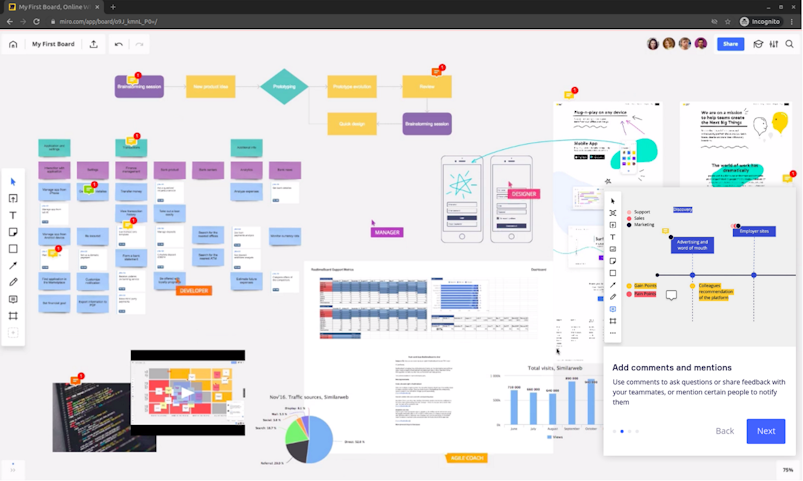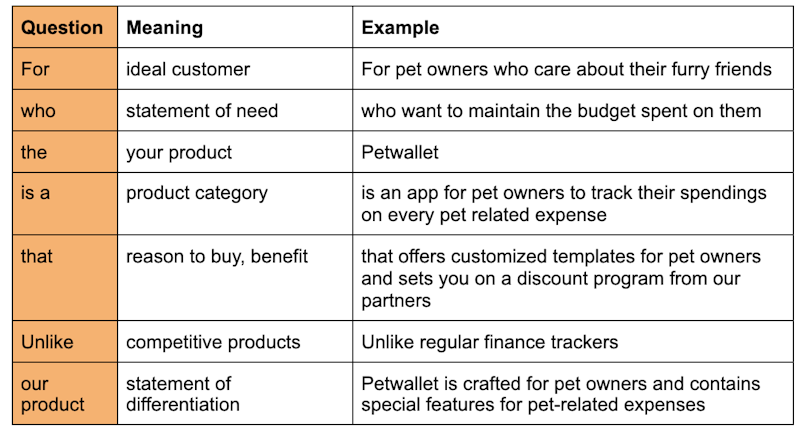Setting a strong product vision is crucial for the success of any business. It provides a clear direction, aligns the team, and helps drive the development of a remarkable product. In this article, we will explore the practical steps to conduct a highly effective product vision workshop. Follow this guide to define your product's purpose, align your team, and set a clear roadmap for success.
Understand the Importance of a Product Vision
A product vision serves as the guiding light for your team. It outlines the ultimate goal, the problem you aim to solve, and the value you intend to provide to customers. By establishing a compelling product vision, you create a shared understanding and a sense of purpose that inspires your team and attracts your target audience.

One Plugin for All Workshop Needs
26 templates; Get stakeholder buy-in; Become a better UX'er.
Get AI PluginStep-by-step Product Vision Workshop Guide
1. Define the Workshop Objectives:
Start by clarifying the objectives of your product vision workshop. Set specific goals that align with your business objectives and the stage of product development.
Examples of objectives may include identifying target customers, understanding market trends, defining product differentiation, or mapping out a roadmap. Tailor the workshop to meet your unique needs and challenges.
2. Gather the Right Participants
Invite key stakeholders and team members who have valuable insights and diverse perspectives. Ensure representation from product management, development, design, marketing, and any other relevant departments.
By involving cross-functional team members, you encourage collaboration, foster a sense of ownership, and ensure a comprehensive understanding of the product's vision.
3. Prepare Pre-Workshop Materials
To maximize productivity, distribute pre-workshop materials to participants. These may include market research reports, competitor analyses, user feedback, or any other relevant information that can help attendees prepare and contribute effectively.
Pre-workshop materials help set the stage, provide context, and allow participants to arrive with informed insights. In practical terms, you essentially need a prepared Figjam or Miro board.

4. Workshop Agenda and Facilitation
Design a well-structured agenda for the workshop to ensure a smooth flow of activities. Begin by introducing the purpose and importance of the product vision, providing examples of successful visions, and highlighting the benefits of a shared vision.
Follow this with interactive exercises like brainstorming sessions, SWOT analysis, user persona development, or creating a visual mood board. Assign a skilled facilitator to guide the discussions, keep the workshop focused, and encourage participation from all attendees.
5. Encourage Creativity and Collaboration
Create an environment that fosters creativity and collaboration during the workshop. Utilize brainstorming techniques, such as mind mapping, storyboarding, or design thinking exercises, to generate innovative ideas.
Encourage participants to actively share their thoughts, opinions, and concerns. Create an inclusive atmosphere where everyone feels comfortable expressing their perspectives and building upon the ideas of others.
6. Craft a Compelling Product Vision Statement
Consolidate the insights and ideas generated during the workshop into a clear and concise product vision statement. It should capture the essence of your product, target audience, unique value proposition, and long-term goals.
Here are a few examples from the prominent companies:

Ensure that the statement is inspiring, memorable, and actionable. A well-crafted product vision statement provides a shared understanding and serves as a guiding force for decision-making throughout the product development process.
7. Develop a Roadmap and Actionable Goals
Translate your product vision into a roadmap that outlines the key milestones and initiatives needed to achieve your goals. Break it down into actionable goals and prioritize them based on feasibility, market demand, and business objectives. Foster a shared understanding among the team about the roadmap and how their roles contribute to its success. Ensure that the roadmap is dynamic and adaptable to accommodate changes and new insights as your product evolves.
8. Regularly Review and Refine
A product vision is not set in stone. Regularly review and refine it based on market changes, user feedback, and evolving business needs. Hold periodic follow-up sessions to assess progress, make necessary adjustments, and realign the team. Continuously communicate the product vision to the broader organization, ensuring that all stakeholders are aligned and motivated to work towards the shared goal.
Conclusion
A well-executed product vision workshop is a powerful tool for shaping the success of your product. By following this comprehensive guide, you can create a clear path forward, foster team alignment, and drive innovation. Remember, a strong product vision not only motivates your team but also attracts customers who resonate with your purpose. Embrace the power of a product vision workshop to transform your ideas into a remarkable reality.





